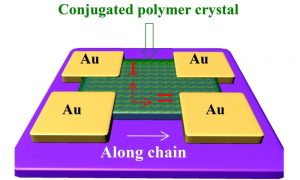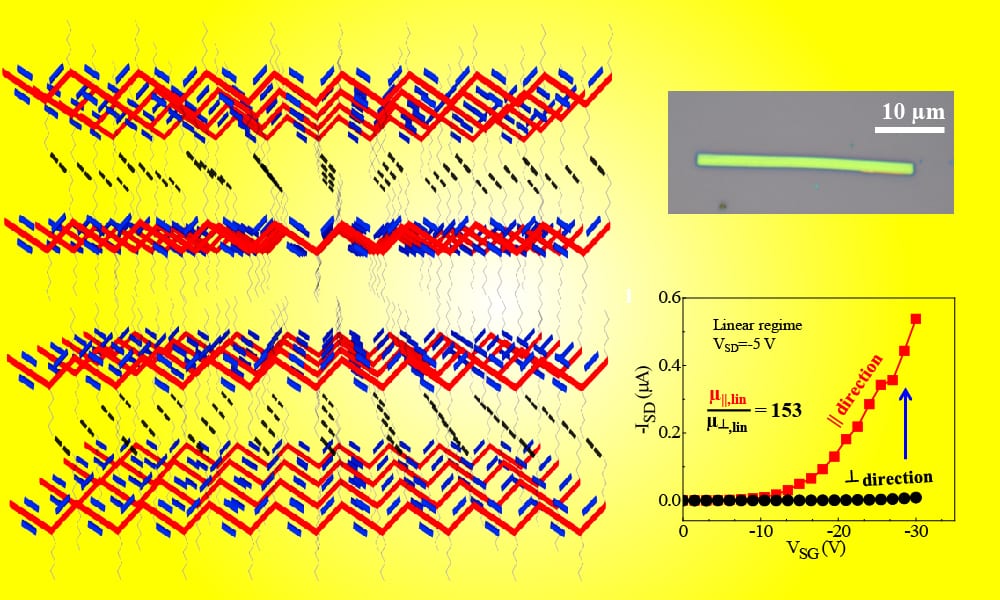Conjugated polymers have attracted wide attention since their discovery due to their promising properties for optoelectronic devices. However, unraveling the charge transport in conjugated polymers remains a big challenge since they are naturally disordered materials where traps, defects and localized electronic states in disordered regions significantly affect charge transport.
Single crystals are well-known to reveal intrinsic charge transport properties of organic/polymeric semiconductors, however, producing single crystals from conjugated polymers remains dificult due to the inherently rigid polymer backbones, often with flexible side chains.
Prof. Huanli Dong and coworkers recently made a big step towards the long-standing fundamental challenge of topochemically polymerized single crystals. With polyacetylene as an example, a breakthrough in producing high quality conjugated polymer single crystals is demonstrated by physical vapor transport and topochemical-polymerization.

Polymer field-effect transistors (PFETs) were creatively constructed with conducting channels both parallel and perpendicular to the polymer chains in an individual crystal. Their measurements demonstrated efficient charge transport along the direction of the polymer chains (intra-chain), which was nearly two orders of magnitude greater than that of inter-chain charge transport in the π-π stacking direction. This is the first example that shows intra- and inter-chain charge transport in an individual conjugated polymer single crystal and demonstrates the importance of intra-chain charge transport in plastic electronics.
Furthermore, the study shows that by refining the structural order, integrity, and extension of polymer conjugation, significant improvements in macroscopic devices can be achieved. It further underscores the promise of in-situ topochemical polymerization for generating exceptionally high performance optoelectronic polymer systems.

















